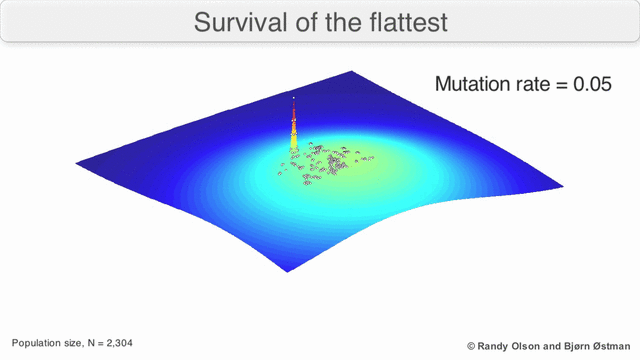Visualizing evolution in action: Survival of the flattest
Published on April 18, 2014 by Dr. Randal S. Olson
evolution evolutionary processes fitness landscape survival of the flattest visualization
1 min READ
Fitness landscapes were invented by Sewall Wright in 1932. They map fitness, or reproductive success, of individual organisms as a function of genotype or phenotype. Organisms with higher fitness have a higher chance of reproducing, and populations therefore tend to evolve towards higher ground in the fitness landscape. Even though only two traits can be visualized this way, we can actually observe evolution in action. Building on the idea of fitness landscapes, Bjørn Østman and I decided to create some animations of simulated evolving populations to illustrate concepts of evolution that are typically difficult to comprehend.
Here we demonstrate the survival of the flattest, a theory stating that when organisms experience a high enough mutation rate, the population will evolve to "flatter" fitness peaks instead of higher peaks. This theory of course flies in the face of the more traditional "survival of the fittest," which would have us think that organisms will always adapt to the highest fitness peak. We hope to show here that there's much more to evolution than "survival of the fittest."
Warning: The GIF on this page is large and may take some time to load.
Here's the full video that Bjørn and I submitted to the ALife 2014 Science Visualization Competition.
